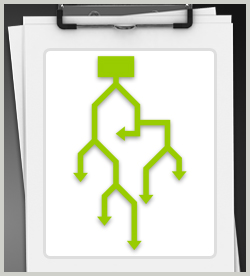KnowledgeCenters Six Sigma KnowledgeCenter Six Sigma Courses
An organization's success depends upon how it delivers on its processes. Before Black Belts can begin to improve an organization's processes, they must collect data to measure current processes using appropriate methods and tools. Successful data collection starts with careful planning and a knowledge of various data types, measurement methods, and sampling techniques. Black Belts also need to be aware of best practices for ensuring data accuracy and integrity. As Six Sigma team leaders, Black Belts help to oversee careful data collection efforts during the Measure phase of the Six Sigma DMAIC process.
This course prepares Black Belts for successful data collection by surveying the types of data, measurement methods, and scales; sampling techniques; and collection methods available. It offers guidance for ensuring data integrity, pointing to different collection methods for different informational needs, and recommending best practices for front-line data collectors. This course is aligned with the ASQ Certified Six Sigma Black Belt certification exam and is designed to assist learners as part of their exam preparation. It builds on foundational knowledge that is taught in 's ASQ-aligned Green Belt curriculum.
This course prepares Black Belts for successful data collection by surveying the types of data, measurement methods, and scales; sampling techniques; and collection methods available. It offers guidance for ensuring data integrity, pointing to different collection methods for different informational needs, and recommending best practices for front-line data collectors. This course is aligned with the ASQ Certified Six Sigma Black Belt certification exam and is designed to assist learners as part of their exam preparation. It builds on foundational knowledge that is taught in 's ASQ-aligned Green Belt curriculum.
| Objectives |
|---|
Data Types, Measurement Methods, and Scales
Sampling, Data Collection Plans, and Methods
|


